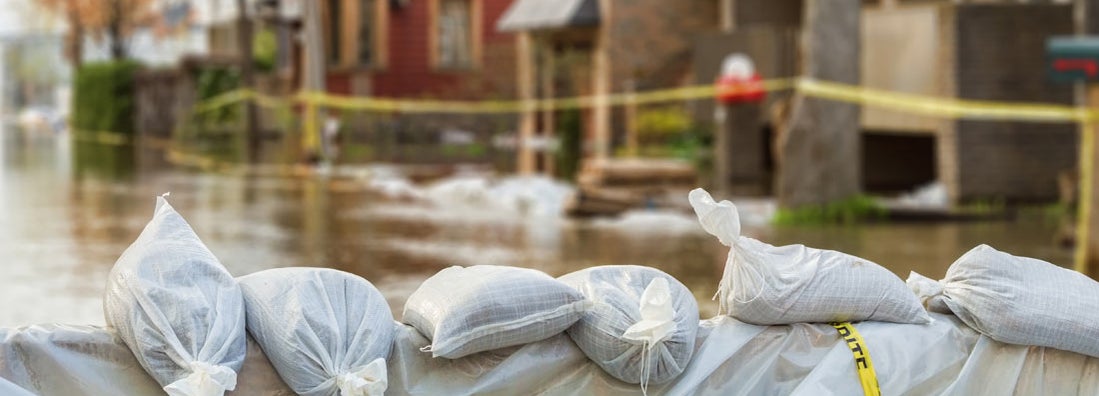Catastrophe Insurance
The costs of catastrophes in the U.S., and how you can protect yourself.

Cara Carlone is a licensed P&C agent with 20 years of experience. She has her P&C license in RI and TX and holds CPCU, API, and AINS designations.

If you have been a victim of a major weather event like a hurricane, wildfire, flood, or earthquake, you have a good idea of why homeowners, landlords, and renters may need catastrophe insurance. These events have occurred with alarming frequency in recent years, and you need financial protection for the damage they can cause.
What are the different kinds of catastrophe insurance, and how do you decide which coverage you really need? Start by contacting an independent insurance agent who can review the types of disaster coverage available in your area and help you make the right choices for your home and family.
Catastrophes by the Numbers
The experts at the Insurance Information Institute (III) provide the following facts and statistics about catastrophes in the United States.
Top 5 Natural Disaster Economic Losses in the U.S., 2024
- Tropical cyclone
- Severe convective storm
- Wildfire, drought, heatwave
- Flooding
- Winter weather
Estimated Insured Property Losses From Natural Disasters in the U.S., 2015-2024
| Year | Losses ($ billions adjusted for inflation) |
|---|---|
| 2015 | $30.7 |
| 2016 | $41.9 |
| 2017 | $168.1 |
| 2018 | $76.4 |
| 2019 | $48.5 |
| 2020 | $99.3 |
| 2021 | $108.7 |
| 2022 | $116.9 |
| 2023 | $82.9 |
| 2024 | $112.8 |
Top 10 Costliest Natural Catastrophes in the U.S.
| Rank | Year | Event | Estimated Insured Property Loss ($ millions, adjusted for inflation) |
|---|---|---|---|
| 1 | 2005 | Hurricane Katrina | $104,471 |
| 2 | 2022 | Hurricane Ian | $57,231 |
| 3 | 2021 | Hurricane Ida | $41,450 |
| 4 | 2012 | Hurricane Sandy | $40,939 |
| 5 | 2017 | Hurricane Harvey | $38,571 |
| 6 | 2017 | Hurricane Irma | $38,432 |
| 7 | 2017 | Hurricane Maria | $37,743 |
| 8 | 1992 | Hurricane Andrew | $35,845 |
| 9 | 1994 | Northridge Earthquake | $33,035 |
| 10 | 2008 | Hurricane Ike | $26,259 |
Beyond the III's data, several recent catastrophes have cost homeowners and insurers billions of dollars:
- The Palisades and Eaton fires in Los Angeles in January 2025 burned over 37,000 acres and destroyed over 16,000 structures. The estimated insurance industry losses for these fires range from $25.2 billion to $39.4 billion.
- The total insured losses from 2024's Hurricane Helene are projected to be between $10.5 and $17.5 billion, with total economic losses reaching $30.5 billion to $47.5 billion, making it among the costliest hurricanes in US history.
All of this unfortunate data leads to a simple conclusion: catastrophic events can and do happen anywhere. And when they do, if you're without appropriate insurance coverage, the costs may be insurmountable.
What Is a Catastrophe and What Does Insurance Cover?
According to the Insurance Information Institute, a catastrophe is an unusually severe natural or man-made disaster that results in any of the following:
- $25 million or more in insured property losses
- 10 deaths
- 50 people injured
- 2,000 filed claims or homes and structures damaged
While there are several different types of insurable catastrophes, not all require separate coverage. Some are included in homeowners, renters, landlord, condominium, or auto insurance policies, or can be added as a rider attached to an existing policy.
Disasters that can be covered by insurance include:
- Hurricanes/tropical storms: Hurricane insurance, or rather, coverage for wind damage resulting from a hurricane, is often available within your regular homeowners insurance policy. But in certain high-risk areas, you may need to get an additional endorsement or separate policy to cover hurricane wind damage.
- Earthquakes: Earthquake insurance is separate coverage in high-risk areas along fault lines, generally in California, Alaska, and Hawaii.
- Tornadoes/windstorms: Windstorm insurance is typically included in a homeowners insurance policy. It is particularly important if you live in the Great Plains or the central states area known as Tornado Alley, or if you live along the coast. In some high-risk areas, you may need to purchase a separate windstorm endorsement or buy a separate policy from your state's high-risk pool.
- Hailstorms: Hail damage is usually covered in common homeowners or auto insurance policies. Coverage of hailstorm damage on a car can be handled through the comprehensive coverage in your auto policy, if it’s in force at the time of the storm.
- Fires and wildfires: Fire insurance covers home fires and wildfires. If one of these damages your home, your homeowners insurance will cover it. If your car catches on fire, the comprehensive coverage portion of your car insurance will apply. Intentionally set fires, of course, are excluded from coverage.
- Floods: Flood damage is never covered by home insurance. Homeowners and renters can buy separate flood insurance policies from the National Flood Insurance Program or private insurers. Vehicles damaged by floods are covered by the comprehensive coverage portion of an auto insurance policy, if applicable.
- Tsunamis: The giant waves created by tsunamis can cause flooding in coastal areas. Flood insurance is the only way to have coverage for tsunami damage.
- Acts of terrorism: Terrorism coverage may be included in your homeowners insurance, but some policies exclude these catastrophes. Separate terrorism policies are available, but these are usually designed for large corporations or high-net-worth individuals.
- Volcanic eruptions: Volcano insurance does not exist as a specific policy form, but much of the property damage that may result from an eruption could be covered by a standard homeowners policy. However, in some low-risk states, you may be able to find volcano coverage endorsements for your homeowners insurance.
DID YOU KNOW?
It is important to look at the details of coverage in your policy to find out if you have or need coverage in the event of a volcano eruption.
Fire damage, smoke damage, and perhaps falling rocks that hit your house may be covered under your homeowners insurance policy. Other volcano-related effects like flooding and earthquakes could require separate coverage, even if they can be traced to the volcanic event.
It is important to know which types of disasters your homeowners or renters policy covers, and which require a separate policy. As an example, your home insurance may provide coverage against wind damage, but not for damage from flooding.
Disaster Preparedness for Your Area
It is a good idea to have an emergency plan for your family when the unexpected happens. Every household should have a fire escape plan. In case of a fire, know your family’s escape routes and meeting places.
The same is true of major storms, since every geographic area in the U.S. experiences tornadoes, windstorms, and hurricanes. Know your storm shelter areas and evacuation plans.
Always have emergency supplies on hand, including flashlights, batteries, power generators, non-perishable food, and emergency water. If you have advance warning, contact your insurance agent and out-of-town family members.
Do You Need Catastrophe Coverage?
The challenge with preparing for disaster is that it’s inherently unpredictable. Some catastrophic events are particularly difficult to predict. Others, such as tropical storms, occur with some frequency and can cause catastrophic losses. Some disasters tend to be cyclical.
Some areas in the U.S. are considered to be in 100-year flood zones, while others may be at risk for flooding only every 200 years. Central California experienced a catastrophic flood in 1861 that created an inland sea for six months, and scientists are concerned that such a megaflood could happen again.
Predicting exactly what disasters you may need to prepare for and deciding whether you need catastrophe insurance is complicated. You can start with the following questions:
- Do you live in an area that is at high risk for tornadoes?
- Are you in a coastal region at risk for tropical storms, flooding, or tsunamis?
- Do you live on a floodplain, and does your community participate in the National Flood Insurance Program?
- Is your home near a forest or dry desert brush?
- Do you live on or near any fault lines?
Knowing these facts about your home and geographic area is an important first step toward finding the right insurance coverage to protect your home.
How Can an Independent Insurance Agent Help You Get the Best Catastrophe Insurance?
To get the guidance you need to make educated choices about catastrophe insurance, work with a local independent insurance agent.
Your independent agent can help you determine whether you need coverage above and beyond your standard homeowners, renters, and auto policies.
Because they are not affiliated with any one insurance company, independent agents can compare rates on coverage from multiple carriers and act as a one-stop resource for all of your insurance needs. Find a local agent in your area today to get a plan tailored to your needs at a price you can afford.
https://www.iii.org/publications/insurance-handbook/insurance-and-disasters/facts-statistics-us-catastrophes
https://www.milliman.com/en/insight/industry-insured-losses-for-los-angeles-wildfires
https://www.theclm.org/Magazine/articles/latest-helene-insured-loss-estimate/3111#:~:text=The%20latest%20total%20insured%20loss,%2430.5%20billion%20to%20%2447.5%20billion.
